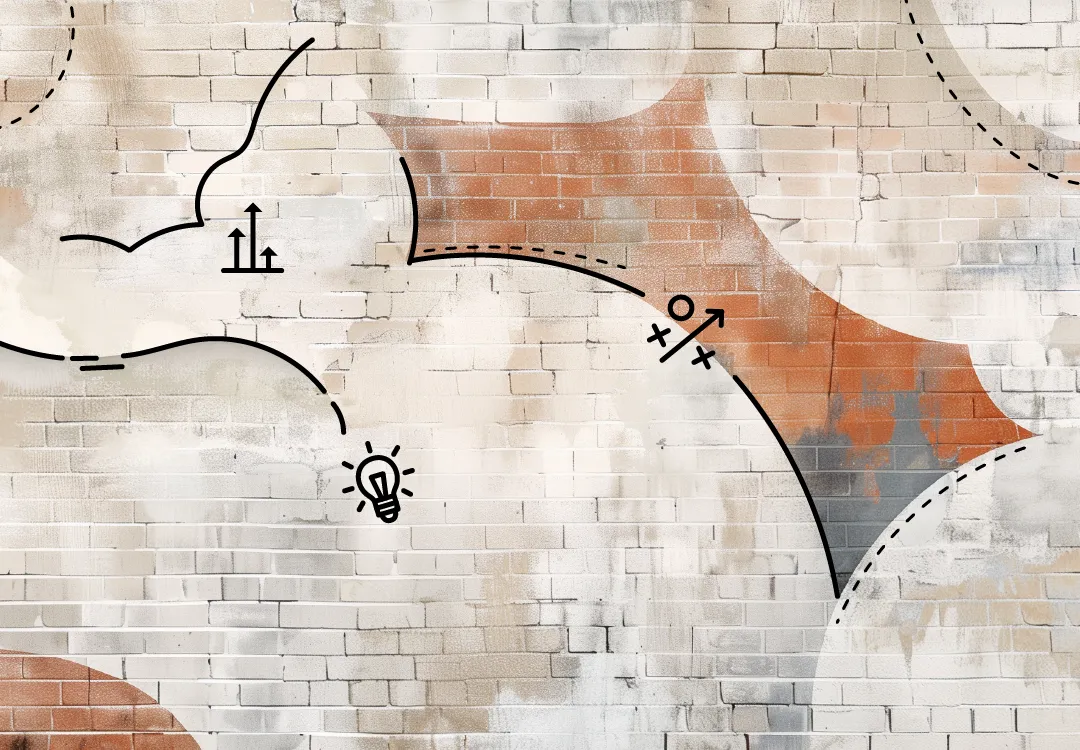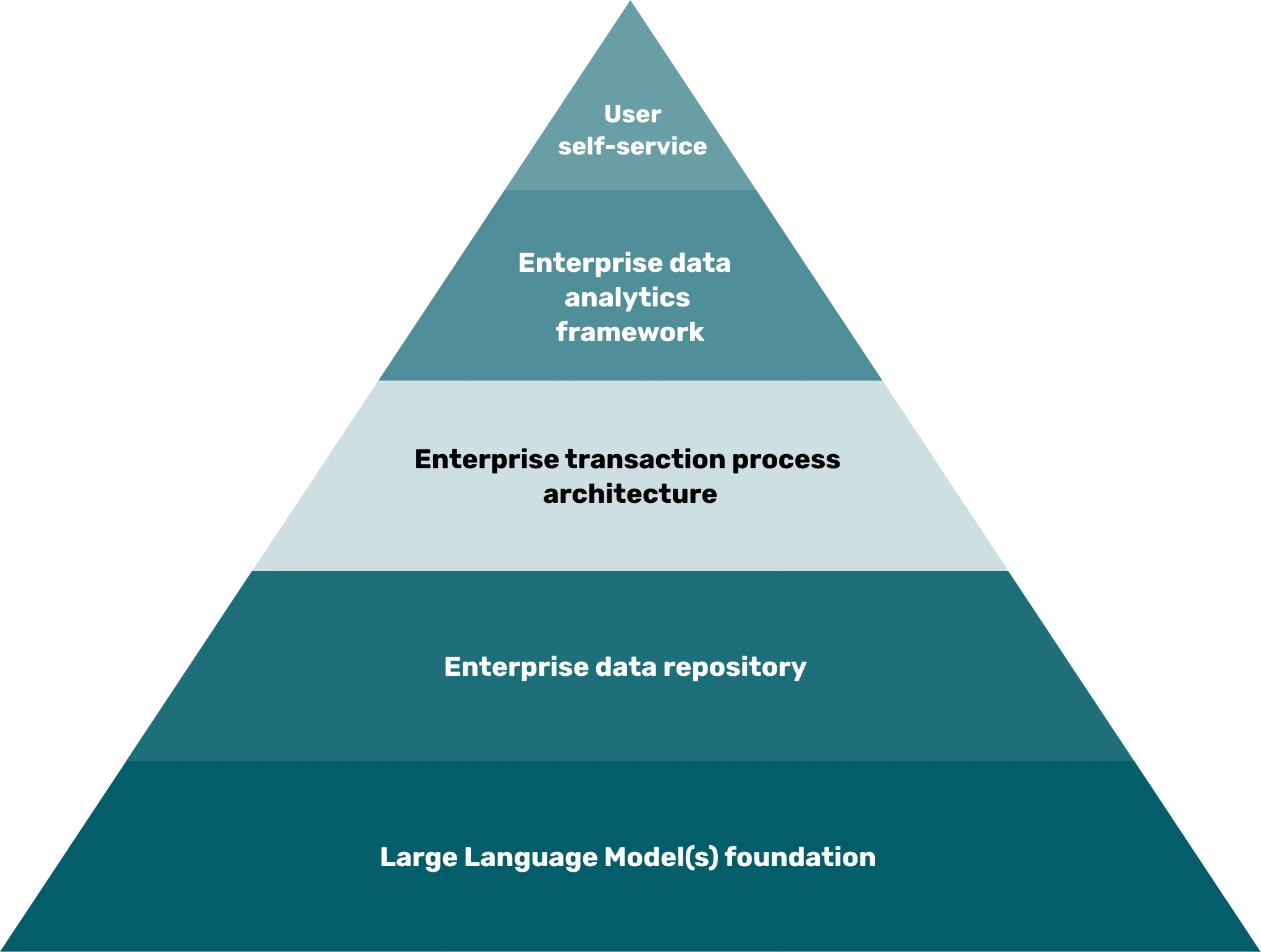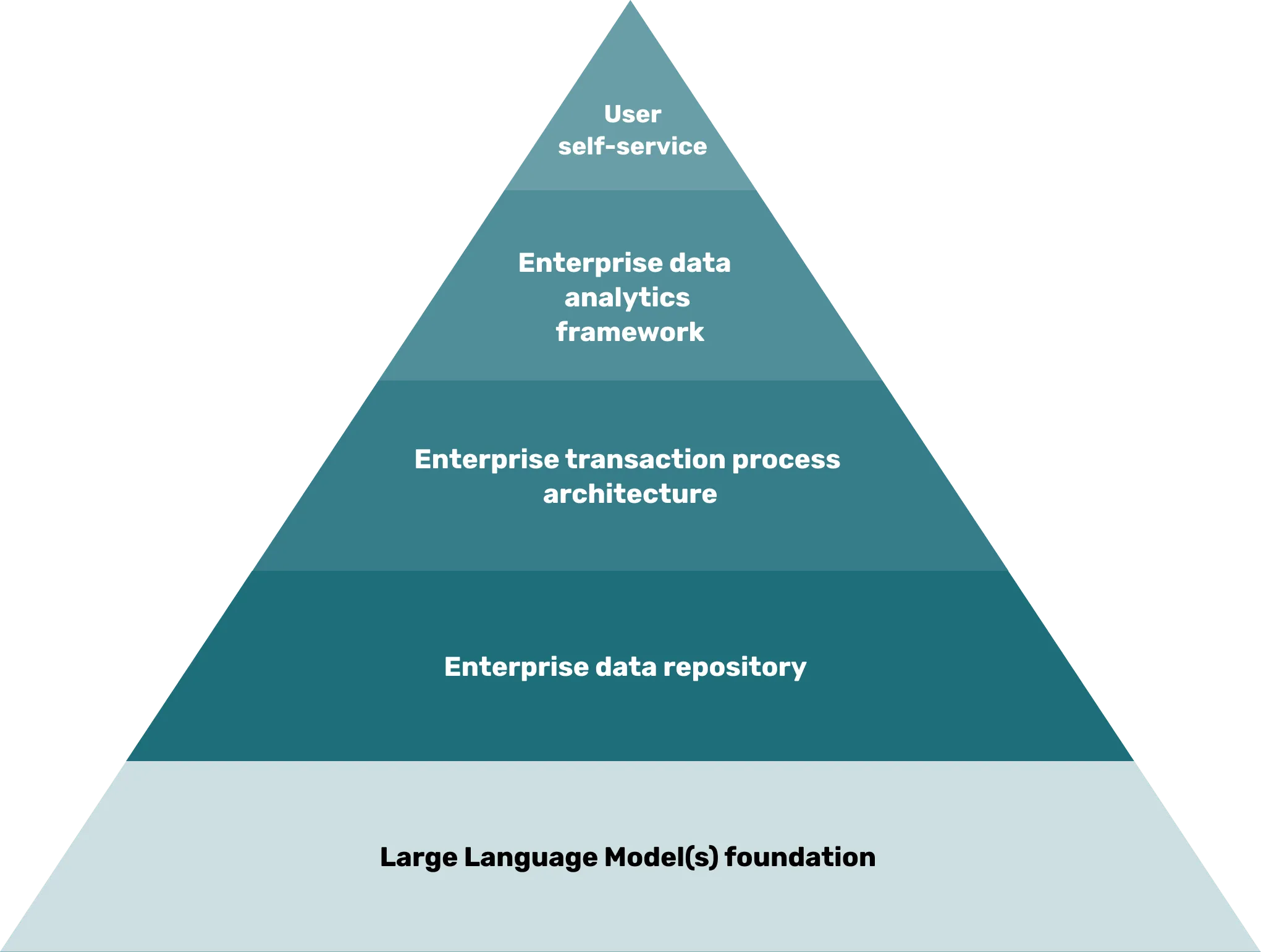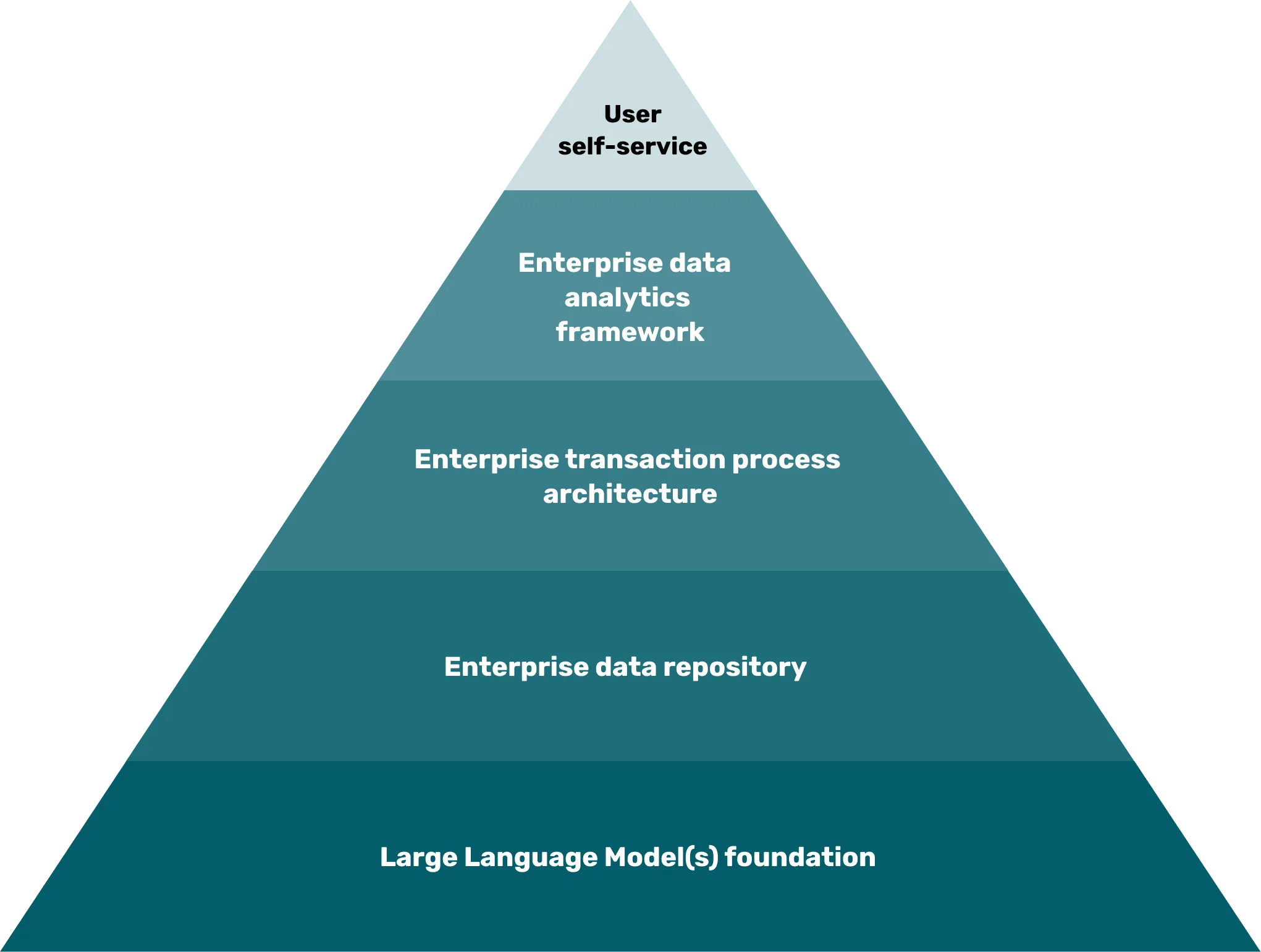Article
Transforming back office efficiency in the AI era
A vision for back office transformation

The disappearing back office series
01
Transforming back office efficiency in the AI era
Table of contents
Related services and insights
Back office optimizationTechnology enablementThe surprising obstacle to improving organizational performance
The importance of back office operations in driving growth
Organizations have been trying to solve back office efficiency challenges for years. However, business leaders are so focused on daily operations that it is often difficult for them to dedicate the time and resources to new solutions. The challenge has never been a lack of interest or ideas. It is a lack of bandwidth.
The irony is that the real cost of the traditional back office is not inefficiency. It is the opportunity cost of “drag” from high performers doing low-value work, slow decisions, and constant friction between back office and front-line staff. The front line focuses on customer service, speed, and flexibility, while the back office focuses on savings, controls, and compliance. It’s no wonder they are at odds.

91% of business leaders say their skilled employees spend too much time on administrative tasks.

Business leaders themselves spend up to 16 hours a week on administrative tasks.
Source: Service Now
For many organizations, this drag is pervasive. Back office bottlenecks and lengthy approvals delay the front line. Resolving payroll discrepancies, benefits questions, and IT outages takes days. Compliance functions get labeled the “department of no.” Status tracking is rare, and mistakes are routine. In fact, nearly one in five customer service interactions now result from back office mistakes or delays, according to Aberdeen Strategy & Research.
Back office drag is more than annoying. It is suffocating. Not only is the traditional back office out of touch with the reality of modern business, but it is also often a silent inhibitor of frontline growth. The good news? There is another way: building radically new back office operations for the AI era.
The turning point in the back office evolution
AI is a turning point in the decades-long search for a better back office. To understand why, consider how the back office has evolved.
Start by rewinding 35 years. Shared services was all the rage as organizations consolidated repetitive tasks into shared services centers and focused on SLAs and process standardization. In 2000, business partner outsourcing and offshoring took hold, shifting transactional tasks to third parties to reduce costs and improve efficiencies. Both of these models require extensive programmatic management and operational oversight. Around 2015, digital enablement introduced robotic process automation (RPA), self-service portals, mobile interfaces, and early AI experimentation, all improving overall back office efficiency.
Just when it seemed there was nothing left to squeeze out of the back office, generative AI burst onto the scene in 2022, ushering in an era of machine learning and API-driven systems replacing rote workflows. In many ways, these AI-orchestrated workflows are the natural evolution of traditional automation—moving from mimicking human steps through predefined scripts to AI agents now planning, adapting, and executing work based on real-time data and intent.
This AI era is taking shape at warp speed. The economics of AI are clearly favorable. Plus, there is finally a technology to help radically transform the back office from a growth inhibitor to a growth driver. It’s a turning point when the back office can exist in a completely new way.
From friction to flow: The disappearing back office
Organizations have learned the hard way that optimizing for back office efficiency—the common fix—is too small for the size of the problem. Marginally better processes only go so far. Reinvention of the operating model is essential to design the friction out.
Enter the disappearing back office. It is an aspiration that goes beyond an optimized back office. This new back office disappears into the background and is more powerful. Like Wi-Fi, it is ambient. Always on and out of the way. It’s where AI-enabled instant responses answer front-line requests. And where customers experience intuitive service and fewer delays. The disappearing back office is all flow and no friction.
In the disappearing back office, the work doesn’t disappear. The drag does.
- Friction fades away
- Manual handoffs are rare
- Status chasing ends
- Time lags vanish
- Delays are infrequent
Three fundamentals of the disappearing back office
How can organizations achieve this aspiration? For some, the snap reaction might be to invest big and boldly in the latest AI technologies to power radical change. The flashier, the better. But moves like this are a formula for failure that create more problems than they solve.
Getting the best from AI as an enabler of back office reinvention is hard work. It requires incremental progress focused on getting the basics right. This means prioritizing the practical, unglamorous, and often grueling work of operating model change to create a back office grounded in three fundamentals.
1. Control for front-line users powered by AI agents
In the disappearing back office, AI bridges the gap between the back office and the front line. This removes the longstanding tension between them, creating an incredibly resilient and self-improving back office. It’s possible because the back office becomes highly virtualized with decentralized AI agents handling most manual, repetitive, and triage-related work.
The more that AI agents virtualize tasks, the more empowered the front line becomes. Front-line users resolve business issues on their own thanks to intuitive user interfaces and Amazon-like, one-click service catalogs. With AI agents now the face of the back office, process bottlenecks and mazes of handoffs disappear, delivering new levels of back office efficiency.
In this virtualized world, the back office is more advisory. Decision-making is reflexive and happens at the point of need. Instead of backward-looking data analysis and reactive improvement cycles, AI agents and orchestration layers automatically trigger context-aware actions.
Behind the scenes, orchestrator AI agents interpret user intent and intelligently route tasks to specialized agents in the network. Humans can focus on the answers, not the frustration of finding them.
2. Standardization and integration of data and processes
The disappearing back office can use AI agents in these exciting ways because it has a fully integrated enterprise data architecture with normalized data and standardized processes. Anything less, and the back office is a house of cards—built on bad data and unable to make automated decisions accurately and consistently.
Full virtualization of data, processes, and analytical models ensures quality and transparency. It requires a locked enterprise data model, codified ERP functions, and standardized transaction workflows. Data, rules, and processing algorithms are predefined for every transaction. All process activity is logged, standardized, and traceable; there’s “only one way” to complete a task. No exceptions. No ambiguity.
With autonomous systems taking over backend core processes, there is more seamless integration with front-line workforces and feedback loops that improve insights and outcomes. This is central to the promise of the disappearing back office. But it only happens if organizations get the data and process foundation right first.
Virtualization requires a locked enterprise data model, codified ERP functions, and standardized transaction workflows.
3. Expert human agents driving growth
The reality is that many of these 25 million back office roles in the United States risk displacement as it becomes virtualized. But humans aren’t disappearing from the back office. They still set the rules and own the outcomes. With AI agents doing transactional work, humans in the disappearing back office are managers and strategic business partners, serving as gatekeepers of standards and lessons learned.
These changes for humans have a profound impact on required skills. Uniquely human skills like creativity, oversight, and judgment are highly sought after. New career paths emerge in software, prompt engineering, governance, and AI ethics.
The most senior human agents align back office operations with business goals, interpret insights in context, shape organizational strategy, and lead others through change. At the same time, they oversee the AI. They design the human-AI interface, determining which tasks stay with humans and which become machine-driven.
The future of the back office starts now
The journey to making the disappearing back office a reality is as important as the destination. Waiting to start only increases the risk of falling behind. After all, 91% of middle market organizations in the United States and Canada have already integrated generative AI into their business practices, according to RSM. This is a big jump from just 77% the previous year.
A back office with less friction and more flow won’t materialize tomorrow. But it is more possible than ever. It is AI-supported, user-owned, and codified. So seamless that it fades into the background, yet so powerful that it drives growth.
This is the disappearing back office. Now is the time to start building it.
The foundation of the virtualized back office starts here.
Prioritize these capabilities to lay the foundation for the disappearing back office.
Hover over each foundation layer to learn more.
Tap on each foundation layer to learn more.





User self-service
The user self-service layer provides the human user context and access to a vast array of AI agents, resources, data analytics, processes to operate and grow the organization’s business
Capabilities needed:
- Customer service agent & user interface
- Context/Mapping tools
- Metadata/Catalog
- SME/FAQ agents
Enterprise data analytics framework
The data analytics layer provides models, agents, tools, constructs, APIs to external data sources to empower massive analytical power to solve business problems.
Capabilities needed:
- Analytics agent
- Models
- Constructs
- Tools
- Rules
- APIs
Enterprise transaction process architecture
The transaction layer provides a full array of transaction processes and associated data to handle every/any type of potential/possible back office transaction.
Capabilities needed:
- Transaction agents
- Transaction architecture
- Audit trails
- Process architecture
- Rules
Enterprise data repository
The data layer includes standards, dictionaries, data models that map and contain all data required by the back office to function.
Capabilities needed:
- Data agents
- Data standards & governance
- Data architecture
- Data model/context
- Data lakes
- Dictionary
- APIs/External data
Large Language Model(s) foundation
The LLM foundation layer provides natural language understanding and generation capabilities, acting as enablers for intelligent, automated work when connected to AI agents.
Capabilities needed:
- LLM APIs (OpenAI, Claude, Gemini)
- Fine-tuned domain-specific models
- Prompt engineering strategies

